Bridge, Kent
Up to 1834
From 1772 until 1793, the parishioners of Chartham took turns in running its workhouse for a month at a time. For at least part of its history, the establishment occupied Bedford House, a former inn on The Green.
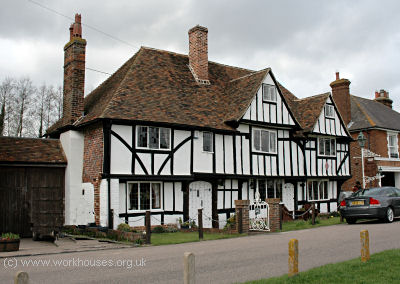
Chartham former parish workhouse, 2005.
© Peter Higginbotham.
A parliamentary report of 1777 recorded parish workhouses in operation in Bridge (for up to 36 inmates), Harbledown St Michael (10), Canterbury Holy Cross Westgate (30), Nackington (12), and Thanington (12).
Following Gilbert's Act of 1782, Gilbert Unions were formed centred on Harbledown and Waltham.
The Harbledown Union was formed in 1806. Its members eventually included Canterbury Holy Cross Westgate, Graveney, Harbledown, Hernhill and St Dunstan. In 1832, In 1832, its workhouse was at Rough Common, to the north of Harbledown.
The Waltham (or Petham) Gilbert Union was formed in 1800 and included the parishes of Petham, Lower Hardres, Waltham and Crundale. The Union erected a workhouse on 3 acres of common land known as Handville Green. In 1828, it transferred to private ownership, with one of the outhouses being used as a bakery and another as a beer shop. During the Second World War, it was taken over by the army and the garden turned into a potato field. The building has latterly been used as a hotel, restaurant and private residence.
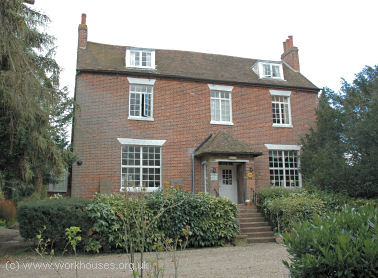
Petham former parish workhouse, 2005.
© Peter Higginbotham.
An existing workhouse at Barham was demolished in 1821 and relocated to Blackingbottle Cottages, at the rear of the Duke of Cumberland pub on The Street.
Littlebourne's parish workhouse was located on The Hill.
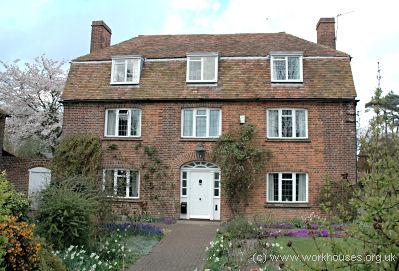
Littlebourne former parish workhouse, 2005.
© Peter Higginbotham.
A house, still known as the Old Workhouse, served as the parish workhouse in Wickhambreux.
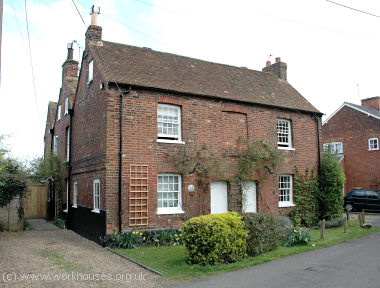
Wickhambreux former parish workhouse, 2005.
© Peter Higginbotham.
Ickham's workhouse was on The Street and is now Ickham Lodge.
After 1834
Bridge Poor Law Union officially came into existence on 20th April, 1835. Its operation was overseen by an elected Board of Guardians, 22 in number, one from each of its constituent parishes as listed below:
County of Kent: Adisham, Barham, Beaksbourne or Beakesbourne, Bishopsbourne, Bridge, Chartham, Fordwich, Harbledown, Lower Hardres, Upper Hardres, Holy Cross Westgate Without, Ickham, Kingstone or Kingston, Littlebourn, Nackington, Patrixbourne, Petham, Stodmarsh, Thunington or Thanington, Waltham, Wickhambreux, Womenswould.
The population falling within the Union at the 1831 census had been 10,139 with parishes ranging in size from from Stodmarsh (population 119) to Barham (1,053). The average annual poor-rate expenditure for the period 1831-4 had been £9,808 or 19s.4d. per head of the population.
The Bridge Union workhouse was erected in 1835-36. It was designed by George Lancefield of Canterbury following Sir Francis Head's model courtyard plan which was also adopted by other Kent Unions such as Cranbrook, Dartford, Dover, East Ashford, Eastry, Malling, and Tonbridge. The Bridge workhouse, which opened in February 1836, was designed to accommodate 350 inmates and its construction cost £4,376. Its location and layout are shown on the 1906 map below.
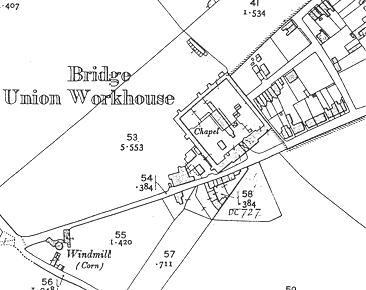
Bridge workhouse site, 1906.
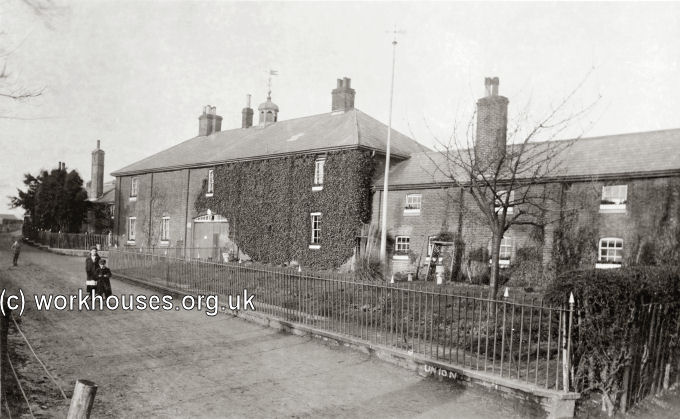
Bridge workhouse entrance block from the east, early 1900s.
© Peter Higginbotham.
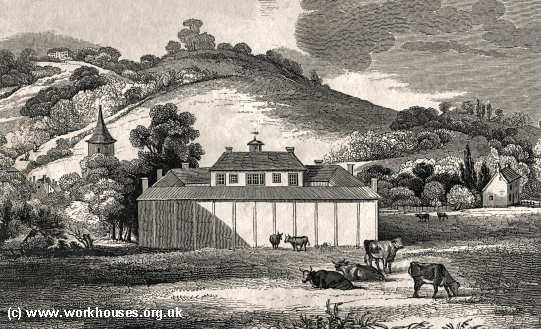
Bridge workhouse from the north-west, 1836.
© Peter Higginbotham.
The entrance block at the south-east had an archway leading through to the porter's room.
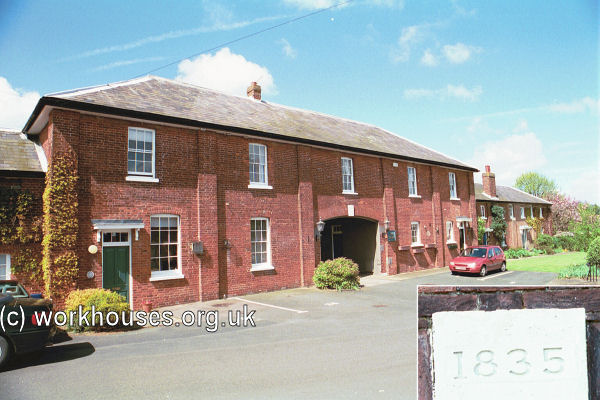
Bridge entrance block from the south, 2001.
© Peter Higginbotham.
The courtyard ranges were of two storeys, with access to the upper floor being by external iron staircases.
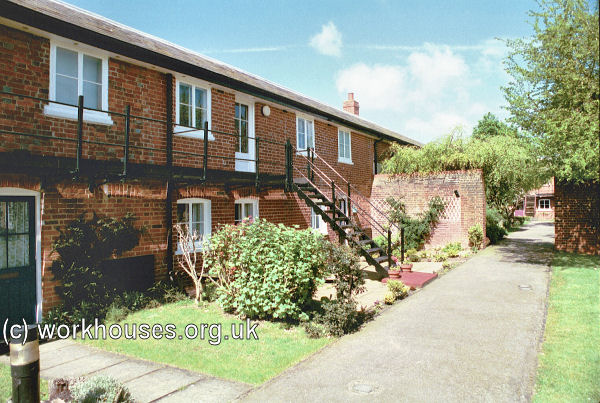
Bridge east range from the north-west, 2001.
© Peter Higginbotham.
In 1846 a chapel, designed by H Marshall, was erected at the centre of the courtyard.
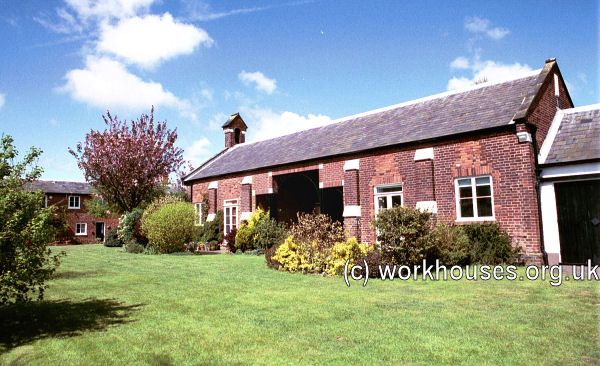
Bridge chapel from the south, 2001.
© Peter Higginbotham.
Further additions to the west of the workhouse in about 1870 included a coach house, dead house, and new vagrant wards.
The room layout is shown on an 1875 plan of the building.
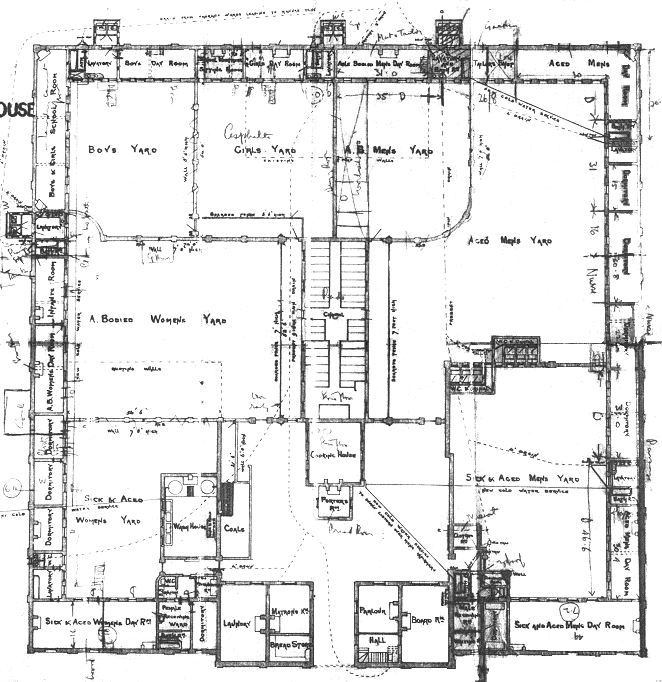
Bridge workhouse site, 1875.
After 1930, the former workhouse became a Public Assistance Institution, mainly providing accommodation for the elderly.
In the 1970s, the buildings operated as an old people's home but were converted to residential use in around 1982.
Staff
Inmates
Records
Note: many repositories impose a closure period of up to 100 years for records identifying individuals. Before travelling a long distance, always check that the records you want to consult will be available.
- Kent History and Library Centre, James Whatman Way, Maidstone, Kent ME14 1LQ Holdings include: Guardians' minutes (1835-1930); Births (1836-1912); Deaths (1835-1914); Admissions and discharges (1835-1934); Casuals admissions and discharges (1907-31); Indoor relief lists (1836-1933); Workhouse medical relief books (1912-14); Lunatics in workhouse (1870-98); Lunatics dead or discharged (1878-1919); Apprenticeship register (1865-1911); Register of infants (1905-26); Register of children sent to training homes (1916-24); Register of children boarded out (1894-1913); Removal orders (1832-1926); etc.
- Canterbury Cathedral Archives, The Precincts, Canterbury, Kent CT1 2EH. Baptisms (1855-94).
Bibliography
- Higginbotham, Peter Workhouses of London and the South East (2019)
Links
- None.
Unless otherwise indicated, this page () is copyright Peter Higginbotham. Contents may not be reproduced without permission.


